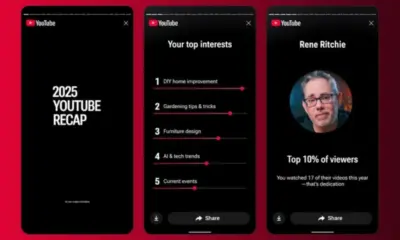Business
Battery Demand Faces Decline as U.S. Tariffs and Subsidy Cuts Loom

Demand for batteries used in electric vehicles (EVs) is projected to decline further in 2026 due to upcoming changes in U.S. subsidy legislation and the impact of tariffs, according to a recent statement from LG Energy Solutions. The company’s quarterly financial report, released this week, highlighted an increase in profit but presented a gloomy outlook for the battery industry.
LG Energy Solutions noted that tariffs imposed during Trump’s administration, combined with the scheduled end of the $7,500 EV subsidy, will significantly burden automakers. This could lead to price increases for vehicles and ultimately slow down EV growth in North America. The recently passed “One Big, Beautiful Bill” by Congress is set to terminate this subsidy in September 2026, which is expected to have a dramatic effect on EV sales across the United States. Additionally, a $4,000 subsidy for second-hand EV purchases will also cease in September.
Despite these challenges, global EV sales have generally been on an upward trajectory this year. Notably, China reported a remarkable 35% increase in EV sales during the first four months, reaching 3.3 million units. This spike can be attributed to the Chinese government’s decision to extend its incentive program, encouraging consumers to trade in gasoline-powered vehicles for EVs at a reduced cost.
In contrast, battery electric vehicle sales in other regions have not met manufacturers’ expectations. Many have shifted their focus towards hybrid vehicles, creating complications for battery manufacturers who had anticipated strong demand bolstered by the incentives outlined in the Inflation Reduction Act. This legislation had promised billions in support for expanding battery production capacity.
To adapt to the changing market conditions, LG Energy Solutions has devised a strategy to pivot its EV battery manufacturing capacity toward producing energy storage batteries. This move reflects the company’s response to the evolving landscape of the electric vehicle market and aims to mitigate the impact of declining EV battery demand.
As the industry navigates these turbulent waters, the future of battery manufacturing remains uncertain, with potential ramifications for both automakers and consumers alike. The interplay of government policies, market dynamics, and consumer preferences will shape the trajectory of electric vehicle adoption in the coming years.
-

 Politics4 weeks ago
Politics4 weeks agoSecwepemc First Nation Seeks Aboriginal Title Over Kamloops Area
-

 World5 months ago
World5 months agoScientists Unearth Ancient Antarctic Ice to Unlock Climate Secrets
-

 Entertainment5 months ago
Entertainment5 months agoTrump and McCormick to Announce $70 Billion Energy Investments
-

 Science5 months ago
Science5 months agoFour Astronauts Return to Earth After International Space Station Mission
-

 Lifestyle5 months ago
Lifestyle5 months agoTransLink Launches Food Truck Program to Boost Revenue in Vancouver
-

 Technology3 months ago
Technology3 months agoApple Notes Enhances Functionality with Markdown Support in macOS 26
-

 Lifestyle3 months ago
Lifestyle3 months agoManitoba’s Burger Champion Shines Again Amid Dining Innovations
-

 Top Stories2 months ago
Top Stories2 months agoUrgent Update: Fatal Crash on Highway 99 Claims Life of Pitt Meadows Man
-

 Politics4 months ago
Politics4 months agoUkrainian Tennis Star Elina Svitolina Faces Death Threats Online
-

 Sports5 months ago
Sports5 months agoSearch Underway for Missing Hunter Amid Hokkaido Bear Emergency
-

 Politics5 months ago
Politics5 months agoCarney Engages First Nations Leaders at Development Law Summit
-

 Technology5 months ago
Technology5 months agoFrosthaven Launches Early Access on July 31, 2025





















